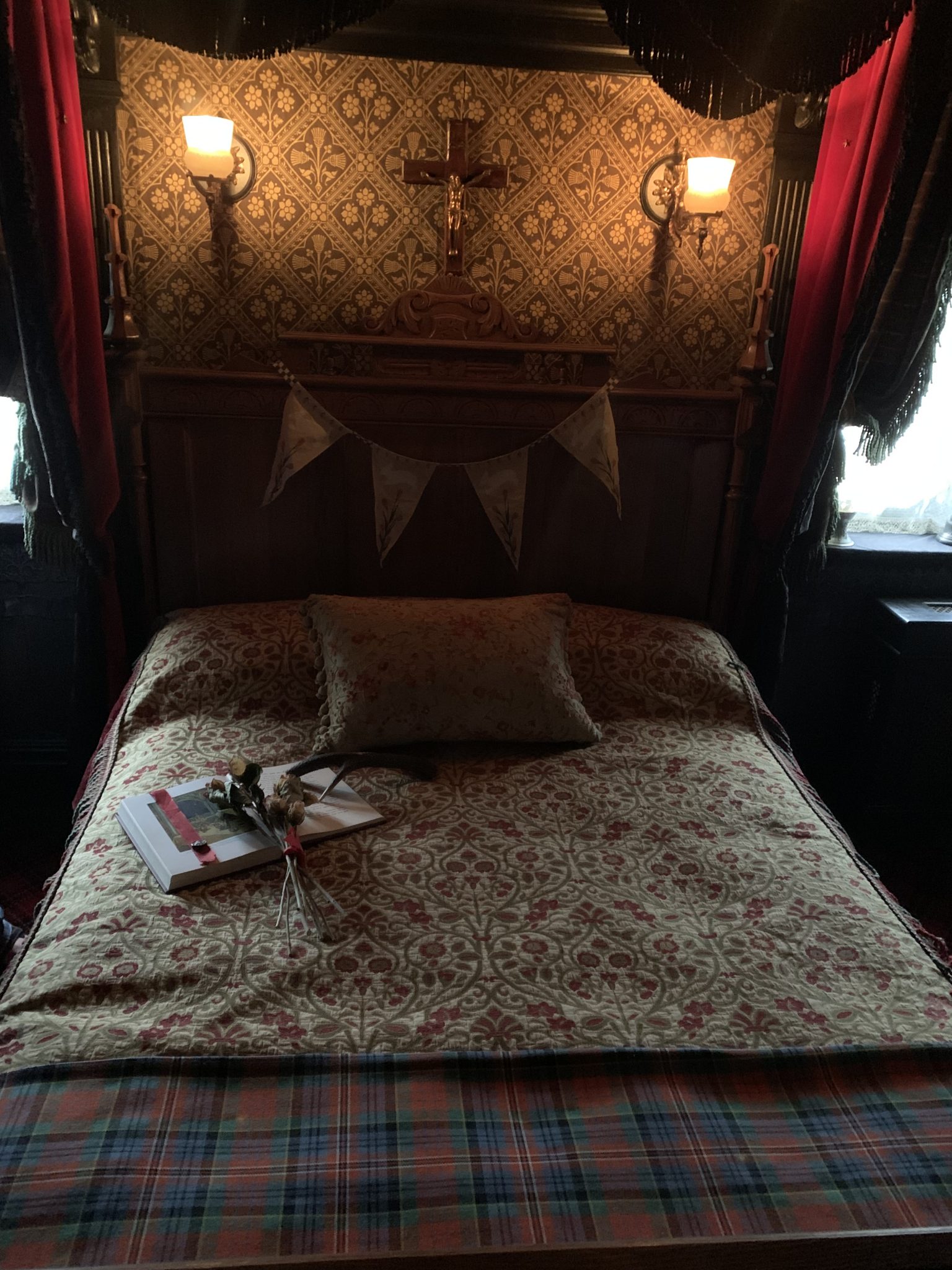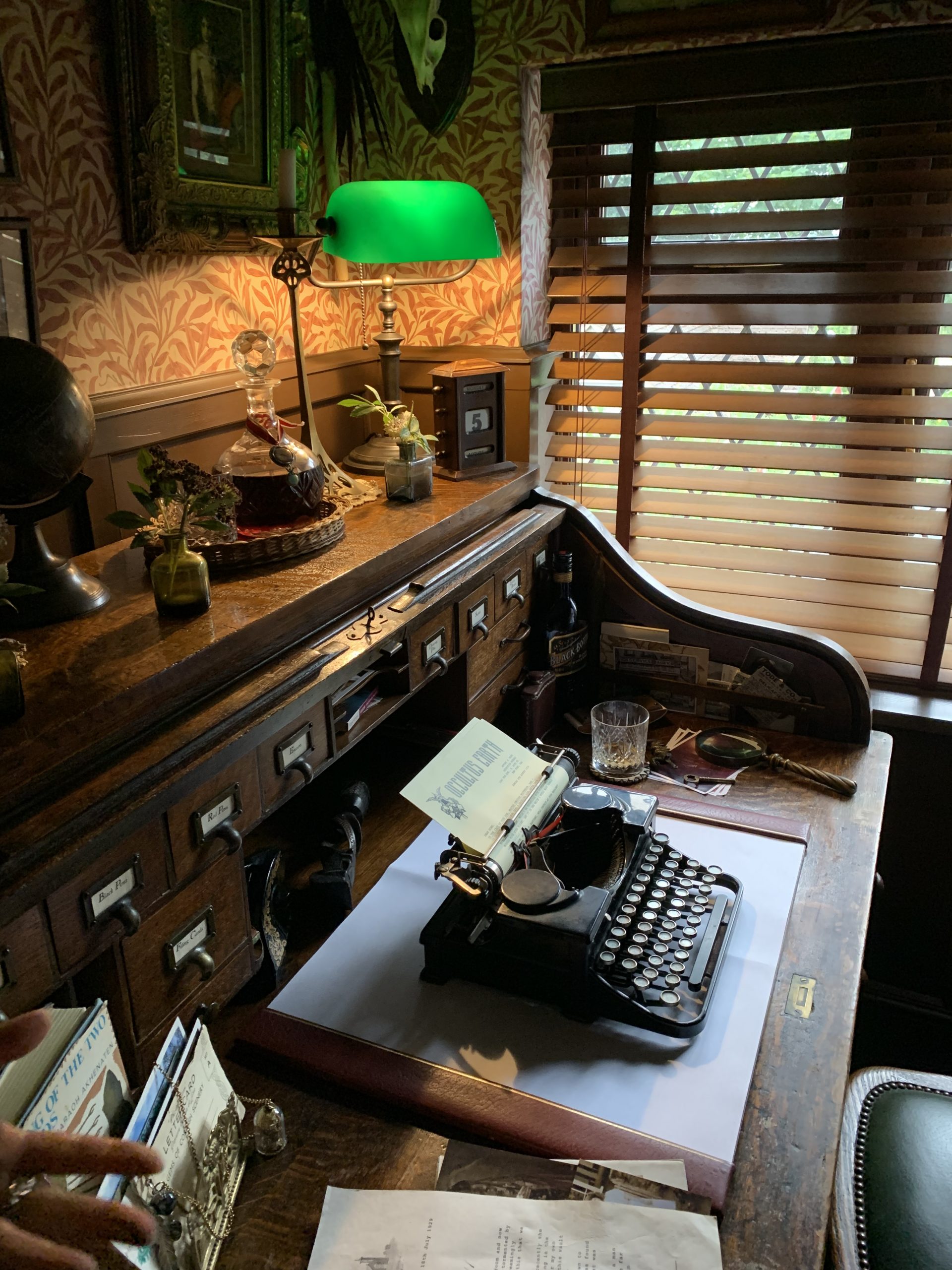Answer: When it’s a journey through time and space.
Last week I visited a house that the Times described as ‘Britain’s most extraordinary home’.
Talliston House is a three-bedroomed semi-detached house in Great Dunmow, Essex, which has so many histories attached to it, that it’s practically a GCSE subject in its own right.
I didn’t meet the owner as he’d gone away on holiday, leaving my friend Sarah to housesit for a week. So when she suggested a guided tour followed by pizza and salad in the New Orleans voodoo kitchen, I jumped at the chance.
There are 13 different eras and locations represented in the house, and each one has its own look, its own story … and even its own smell. The attention to detail is phenomenal and the whole project has taken 25 years to complete.

The garden is the Old Rectory vegetable garden 1852 … but not just any old day in 1852, it’s 13 October 1852. Although with all the roses and petunias in flower, a bit of artistic licence is required here.
Unsurprisingly, the most popular room in the house is the haunted bedroom. It’s a dark, gloomy, wood-panelled room set in Ravnsbrae Manor, Stonehaven, Scotland on 26 June 1911. The story is that it’s the bedroom of a 7-year old boy who died suddenly, and his parents sealed the room up after the hauntings began.

It manages to smell musty, as though the door really has been shut for years, and is oppressively dark – partly due to the black panelled walls. Sarah explained that she spent an afternoon fixing 400 small wooden tiles to a wall, to give a fish scale effect … not to mention the time she spent painting the walls of the landing with coffee to add a veneer of antiquity!
I rather enjoyed sitting on the baronial throne.


It’s plumbed in and flushes … allegedly. But I just tried it out for size.

My favourite room was the study, done up as the Fifth Avenue office of a New York private investigator, 5 August 1929.


Not only are all the photos on the walls appropriate to the time and place, but the backstory of Anthony R Kane, investigator, explains his love of travel and the bizarre collection of souvenirs he’s brought home …

… although maybe a sword and a gun would have been quite useful for a private investigator.
It’s not enough for each room to be visually period perfect – we also have sound and smell to create the full 4D experience. So, in the study there is early jazz playing to recreate the mood of the 1920s, and the smell, according to the notes supplied for this room, is:
- top note: Diptyque Feu de Bois room spray
- middle note: Satya Sai Baba Nag Champa
- base note: L’Artisan Parfumeur amber solid and oils
Who knew, apart from Dashiell Hammett presumably, that this is what a 1929 private investigator’s office smelt like?
The New Orleans kitchen is set in 1954, and the voodoo altar and dead rabbits hanging on the wall belonged to Evangeline, the maid. She still held to the old ways from when Voodoo Queen Marie Laveau held sway in this part of town in the 19th Century. Apparently the mistress of the house – an ardent moderniser with her frigidaire, toaster and range cooker – was none too keen on her kitchen being remodelled as a voodoo temple to connect with the spirits. But she seems to have gritted her teeth and let Evangeline get on with it … finding decent staff and hanging onto them obviously isn’t just a post-Covid problem.
I did find it slightly offputting, having a couple of dead rabbits strung up on the wall behind me, peering glassily over my shoulder at my pizza. Luckily the voodoo altar was on a high shelf, so I couldn’t see it from where I was sitting.


The bathroom is from the Lightkeeper’s House, Hameroy, Norway. It’s 9 February 1986, just before Lars Thorstad, the last Lightkeeper, is made redundant having been replaced by an automated light … poor sod. He has a lovely sailing boat for bathtime, and an enviable collection of shrimping nets. The sound in this room is, understandably, water lapping and splashing to evoke being in a lighthouse, but it did rather put me in mind of Japanese toilets with their modesty preserving sound effects.


And the time and space travel doesn’t stop here. There’s also a Welsh watchtower dating from 1210, an Italian Hall of Mirrors, a bedroom from the Alhambra, a Cambodian temple, an Irish courtyard garden belonging to a former circus performer, and a log cabin from Saskatchewan, hand built in the 1930s by an English trapper, known locally as He Who Walks by Night.
I’d love to meet the owner and ask him why. He sounds like a one-off, a true creative – and also just a teeny bit bonkers …
